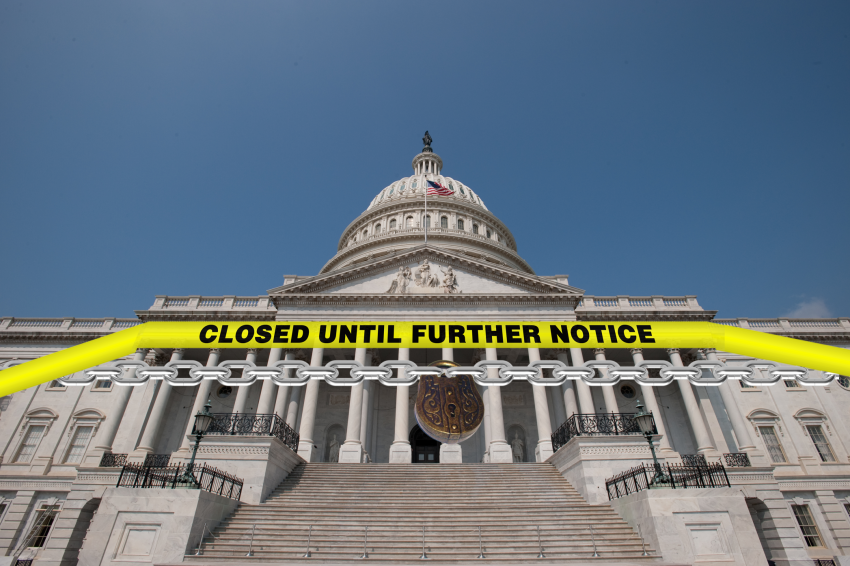The federal government shutdown that began on October 1, 2025, could not have struck at a more devastating moment for American farmers. With the harvest season in full swing across the Midwest and beyond, row crop producers are racing against weather and market volatility, only to find essential federal support frozen. The U.S. Department of Agriculture, a lifeline for disaster aid, crop insurance, and loan processing, has furloughed thousands of employees and halted key operations. This paralysis comes atop the expiration of the 2018 Farm Bill on September 30, leaving programs like conservation initiatives and price supports in limbo. Farmers, already battered by low commodity prices and trade disruptions, now face a cascade of delays that threaten their very survival.
The roots of this crisis trace back to partisan gridlock in Congress. Democrats bear significant responsibility for the impasse, as Republican leaders and the White House have accused them of insisting on provisions that extend federal healthcare benefits to illegal immigrants, sidelining the needs of American citizens in the funding bill. Senate Democrats blocked a Republican-backed continuing resolution, prioritizing what critics call expansive social spending over basic government operations. This stance, echoed in statements from Trump administration officials, has forced the shutdown despite warnings of its ripple effects on rural economies. On the other side, Democrats counter that Republicans are exaggerating the issue and that the real fight centers on affordable healthcare for working families, not immigrants. Yet the result remains the same: a locked Capitol that has stranded producers who cannot afford even a week’s delay.
Republicans, too, share blame for failing to act decisively. Despite controlling the House, they did not secure a new farm bill before its expiration, missing a critical deadline that ag groups had urged them to meet. A GOP proposal passed the House but stalled in the Senate without Democratic votes, leading to yet another short-term extension that crumbled. This inaction compounds the pain from President Trump’s renewed tariff policies, which have hammered row crop commodities like soybeans and corn. U.S. soybean exports to China plummeted over 30 percent in 2025 due to retaliatory measures, leaving granaries full and prices depressed. Farmers report losing billions in potential sales, with some operations on the brink of foreclosure. While the administration touts tariffs as a tool to bring manufacturing home, the immediate fallout has decimated export-dependent agriculture without sufficient offsets in place.
The USDA’s contingency plan reveals the depth of the disruption. Approximately 42,000 employees, nearly half the workforce, are furloughed, including 67 percent of Farm Service Agency staff who handle loans and payments. Disaster assistance for flood-damaged fields or drought-stricken herds is paused, as is processing for crop insurance claims and conservation program enrollments. Food safety inspections continue for essentials like meat processing, but routine animal welfare checks and rural development grants have stopped. Trade negotiations, vital for reopening markets, grind to a halt. For farmers in states like Iowa and Illinois, this means delayed reimbursements at a time when input costs soar and cash flow evaporates. One Nebraska producer noted on social media that local USDA offices are shuttered, exacerbating uncertainties from the farm bill lapse. The long-term damage extends to America’s reputation as a reliable trading partner, eroding trust in global supply chains.
Amid the chaos, Treasury Secretary Scott Bessent offered a glimmer of hope on October 2, promising an announcement next week on “substantial support” for farmers, potentially $10 billion or more drawn from tariff revenues. The plan could include direct payments to offset trade losses, with the first tranche rolling out soon. Yet words ring hollow when silos overflow and lenders circle. Many family farms, squeezed by years of low margins, teeter on insolvency; a bailout, even if generous, arrives too late for those already filing bankruptcy. Estimates suggest up to $50 billion in aid might be needed to fully cushion the tariff blow, far beyond initial figures. Farmers union leaders warn that prolonged uncertainty could force consolidations, wiping out generations of stewardship.
Compounding the betrayal, Washington seems to value foreign entanglements over domestic soil. Billions flow unabated to fuel conflicts in Ukraine and Israel. These commitments persist even as the shutdown idles USDA researchers and starves nutrition programs like WIC. Politicians rally for overseas security, yet American agriculture, the backbone of food security, crumbles without a second thought. Social media posts from rural advocates highlight the hypocrisy: “Farmers don’t get to shut down,” one read, as billions vanish into distant wars.
The sting deepens with recent U.S. aid to Argentina, a $20 billion economic lifeline extended in late September. As American soybean growers watch zero bushels ship to China this harvest, Buenos Aires ramps up exports to Beijing, surging to seven-year highs. Senators from farm states decry the move as a slap in the face, funneling taxpayer dollars to a competitor that undercuts U.S. prices. Argentina’s soy boom exploits the void left by Trump’s tariffs, turning our pain into their profit. This feels not just like neglect, but outright disloyalty to the heartland that feeds the nation.
American farmers deserve better than partisan posturing and half-measures. The shutdown must end, the farm bill renew, and aid deliver without strings. Until then, the betrayal festers, one unharvested acre at a time. AgroWars stands with producers demanding accountability: prioritize the plow over the politics.


